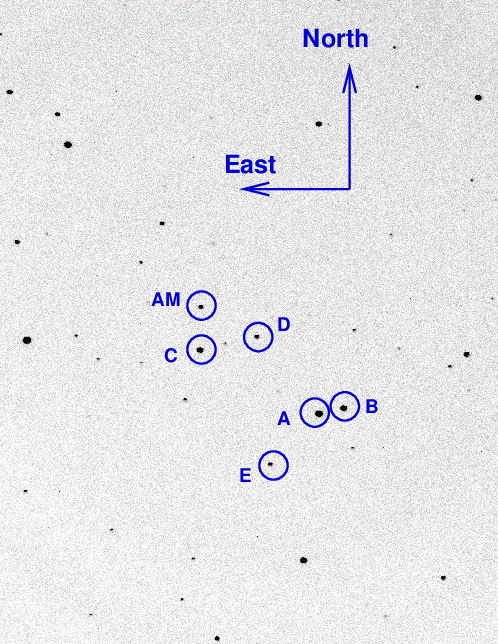
On the night of Apr 07/08, 2021, under very good conditions, I acquired images of the cataclysmic variable star AM CVn. One can find information about it at
The results were the best I've managed so far. I made small focus adjustments throughout the night (good), but did change exposure times in the middle of the run (bad).
Joe Patterson of the CBA requested data on this star, so I gave it a try. The star is at the faint limit for time series photometry with our equipment, but I wanted to test it.
The main setup was:
Notes from the night:
The object is located at
RA = 12 34 54.6 Dec = +37 37 44.1 (J2000)
A chart of the field is shown below. The size of the chart is about 19 x 26 arcminutes.

I've marked the location of several comparison stars as well.
star AAVSO B V ----------------------------------------------------------- A APASS 8699612 12.226 11.639 B APASS 8699621 12.952 12.290 -----------------------------------------------------------
I took a photo of the finder TV's screen when pointing to this target; this could be a useful reference for the future:
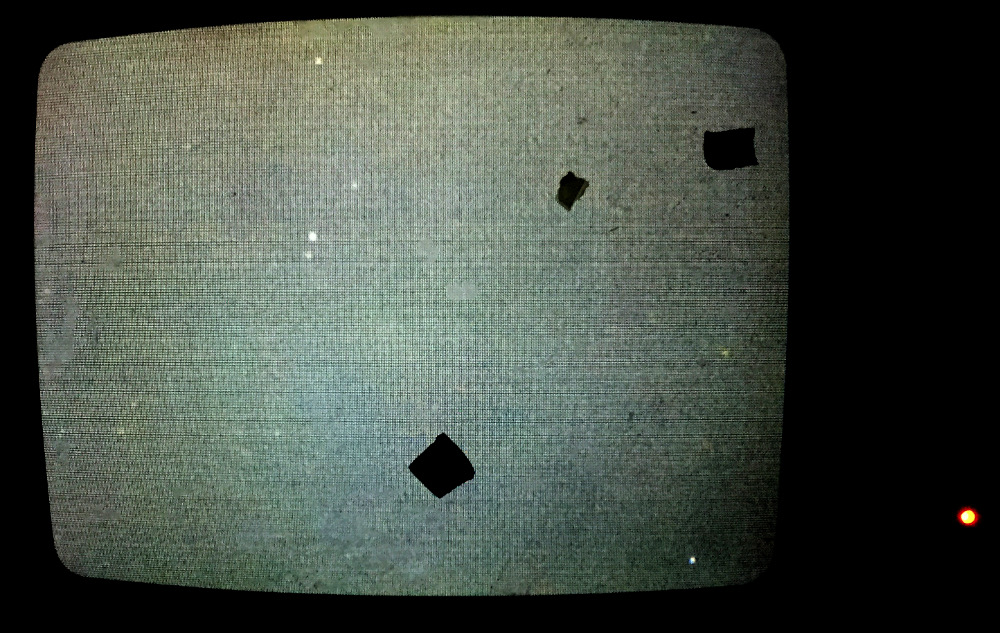
The sky value shows that the sky was clear. The discontinuity is due to the change in exposure time.

The FWHM:

Using aperture photometry with a radius of 7 pixels in a clear filter (binned 2x2, each pixel is 1.24 arcsec, so a radius of 8.7 arcsec) for all exposures, I measured the instrumental magnitudes of a number of reference stars and the target. Following the procedures outlined by Kent Honeycutt's article on inhomogeneous ensemble photometry, I used all stars available in each image to define a reference frame, and measured each star against this frame.
Sigma-vs-mag plots show that the floor was about 0.009 mag with a 30-second exposures, 0.008 mag for 60-second exposures.
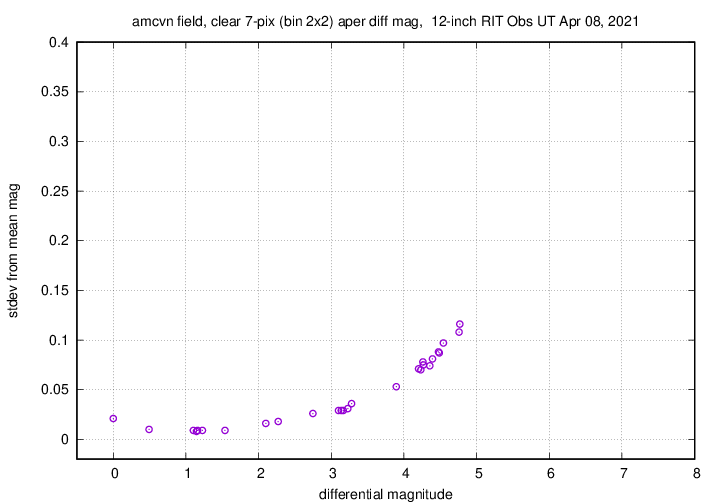
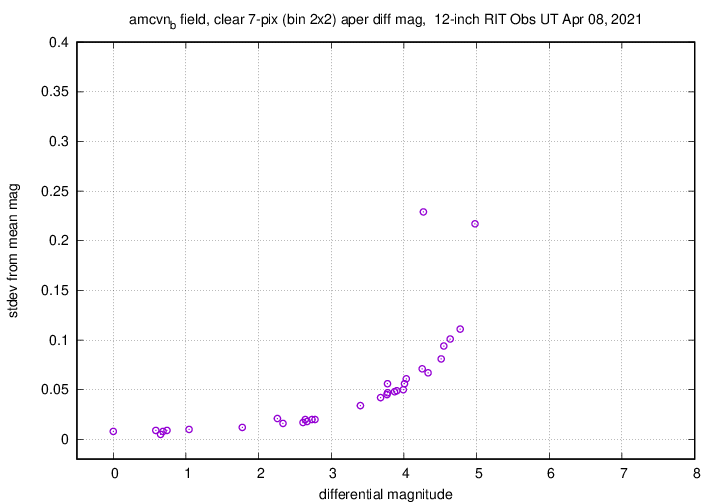
The image-to-image zeropoint shows jumps due to trailed images.
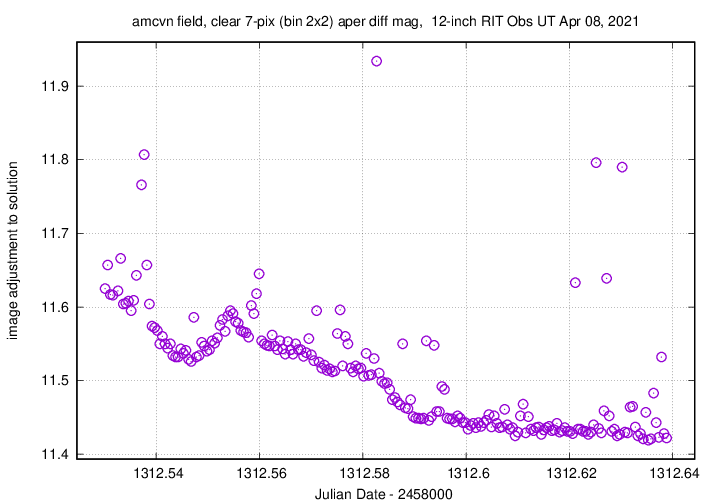
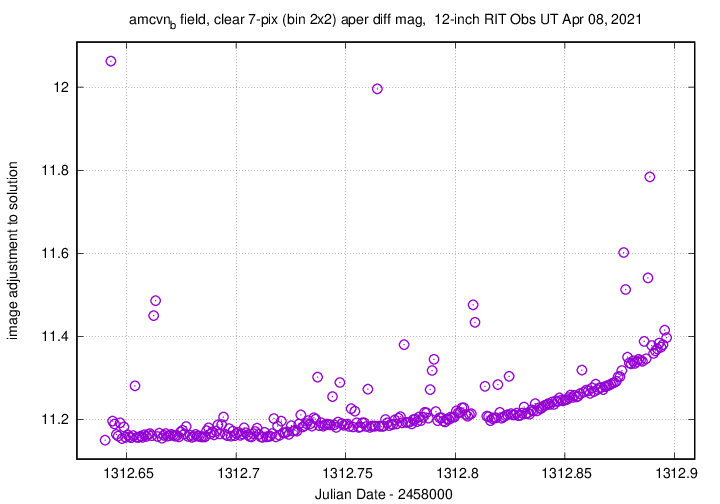
Here is the light curve of the object and several field stars in the clear filter; I've shifted the instrumental magnitudes so that star "B" = APASS 8699621 has the value given by APASS as its V-band magnitude.

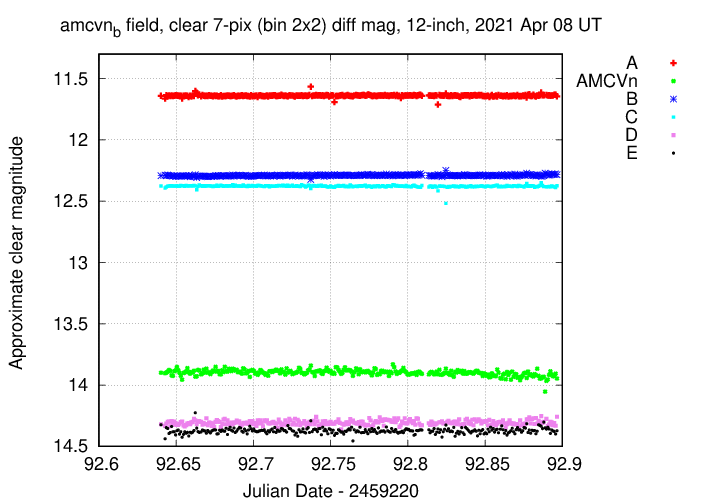
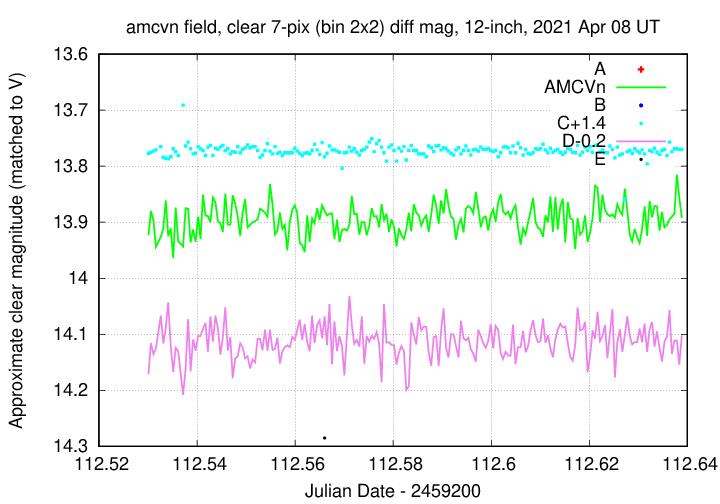

A periodogram -- thanks to the NASA Exoplanet Archive tool! -- shows a strong peak at the known 525-second (= 0.006076 day) period.
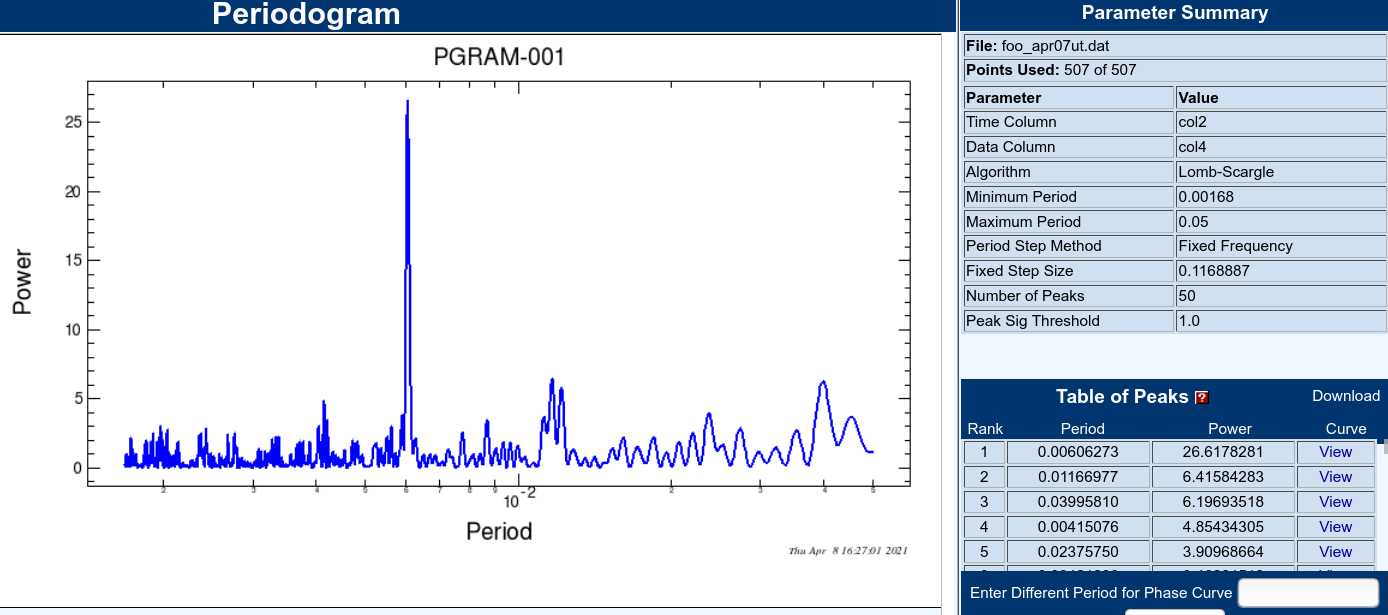
You can download my measurements below. A copy of the header of the file is shown to explain the format.
# Measurements of AM_CVn made at RIT Obs, UT 2021 Apr 8, # in very good conditions, # by Michael Richmond, # using Meade 12-inch LX200 and ATIK 11000. # Exposures 30, then 60, seconds long, clear filter. # Tabulated times are midexposure (FITS header time - half exposure length) # and accurate only to +/- 1 second (??). # 'mag' is a differential magnitude based on ensemble photometry # using a circular aperture of radius 7 pix = 8.7 arcseconds. # which has been shifted so APASS_8699621 has mag=12.29 # which is its V-band magnitude according to APASS. # # UT_day JD HJD mag uncert Apr08.03009 2459312.53009 2459312.53415 13.923 0.029 Apr08.03059 2459312.53059 2459312.53465 13.880 0.029
Last modified 4/08/2021 by MWR.